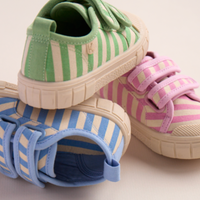Understanding why a baby has reflux or colic isn't as straightforward as many of us wish. Luckily, we have Aine Homer, The Baby Reflux Lady, at hand who has some advice on how you can change your diet when breastfeeding to help with reflux and colicky babies.
Food for breastfeeding mums of reflux or colicky babies

Wind in breastfed babies can come from several sources, my previous MORI blog (here) details how to spot the signs of drinking too much air (clicking, noisy feeding, gulping, choking, spilling milk).
If your baby is doing any of these when feeding, then your first step is to see a Tongue Tie Practitioner or a certified lactation consultant for latch support or a Tongue Tie Practitioner if there is a tongue tie present (remember, TT can be difficult to spot so do not just take your GP’s or health visitors word for it.
TT practitioners and ICBLC’s have extensive and specific training to be able to identify posterior TT).
If all is okay with baby’s latch, and baby has signs of colic or reflux (either with or without vomiting – the latter is called “silent reflux”), then there may well be something in your milk that your baby cannot digest properly, which is fermenting and then causing wind and gas down the way, that can be difficult to move and uncomfortable.
I hear and read so many stories of when mum’s stop breastfeeding because of their baby’s reflux, and then they spend weeks and months still trying to resolve their baby’s pain and discomfort.
If you are breastfeeding your baby and they have reflux symptoms and are unsettled and discontented, it may be that there is something in your breastmilk that they cannot digest properly causing some problems.
There are rare conditions when baby might not be medically able to have breastmilk. In general, I believe that breastmilk is the best option for a reflux baby.
Why breastmilk is still best for reflux baby?

If baby is breastfed and is showing signs of reflux, very unsettled and discontented, breastmilk is the best source of nutrition, and is the easiest to influence, because you can influence its content.
There are other reasons why breastmilk helps. Firstly, it has a natural analgesic in it, so it is a painkiller for baby; secondly, the act of suckling and feeding stimulates peristalsis and makes everything move the correct downward direction, and thirdly, milk will wash back down any acid that is annoying baby. For these reasons alone, you may observe that your unsettled baby wants boob “all the time”, and indeed, a breastfed baby may “over-feed” themselves purely for comfort reasons.
If your breastmilk has food molecules in it that your baby cannot digest properly, you can change these with relative ease. Formula milk is formula milk and you cannot change what is in it. There are few formulas (if any) that are fully digestible by infants and so many parents trying various types of milk with worsening symptoms. In 5% of reflux babies, the reflux only started after mums stopped breastfeeding.
Supporting your Baby with Your Diet

Once you are assured that your baby’s latch is as good as it can be, and they are no longer drinking air with their milk, you can start to look at modifying your diet.
I always recommend that you keep a detailed food and symptom diary. This will allow you to pinpoint potential irritants as well as give you a reliable reference point.
Without a written record of what is going on for your baby, your brain will not let you remember accurately where you were at when you started. Your brain will happily hide from you the memories of those horrid nights, the 2 hours of broken sleep for 3 consecutive weeks and the constant screaming and crying.
You can access a free food and diary template by heading to my website.
It is important to be aware of what is going on with your baby. There are a lot of symptoms that could be indicative of discomfort caused by food intolerance. You can find a comprehensive list of these symptoms in the food diary templates.
The most common culprit is cow’s milk and soy (these two rarely go uncoupled). I see many mums who have gone on a strict and massive elimination diet, to see no results. What I have found is that they are restricting their diet incorrectly. They have not been taught what is the difference between their digestive system and that of their baby.
The thing is, your baby was born underdeveloped. We know this as a fact – they cannot stand and walk within a few hours of birth like a horse! And we hear lots about physical, cognitive and emotional development and the stages of these, right through primary school. What I have never heard, is how our baby’s digestive system still has to develop as well. I mean – they are designed to survive on milk alone for at least the first 6 months of life. They are born without teeth – the most basic tool for grinding solid food. And they also do not produce many of the digestive enzymes needed to completely breakdown food.
And herein lies the secret. If we recognise our baby’s digestive system for the underdeveloped system it is, if we pay them due respect and be gentle, then we will have happier baby’s with far less digestive system discomfort.
Your baby can be reacting to anything you eat.

I suggest you do 3-5 days of your “normal” diet and symptoms so that you have a clear picture of where you and baby are starting from. You can gradually cut out foods such as dairy, (including hidden dairy proteins and sugars such as beef and veal, gelatin and lacto- anything) soy, eggs and nuts, the major allergens. Yet you may find that you are on a restricted diet, have seen some improvement in your baby, yet still be unsure about what is specifically having an impact or not.
In my practice, I see quicker improvement through a faster and greater elimination diet that returns to re-introducing food much quicker to find the culprit foods for your baby.
My suggestion is to restrict your diet for a very short few days (3-4 days should be enough to see some massive improvements) and then gradually reintroduce foods according to the ease of digesting them.
Avoid foods that give you wind, or any tummy troubles, avoid all dairy and soy and egg whites, and then gradually build up your diet. If you see a flare in symptoms, stop eating that food immediately and wait until baby has returned to a good place to introduce another food.
As a mum to two girls who between them have had diagnosed colic, reflux, silent reflux, CMPA, tongue-tie and other food intolerances and allergies; Aine Homer has experienced the “trial-and-error” approach of the medical community with no real answers or support. Feeling unsupported, dismissed and that it was all “in her head”, Aine was left with no choice but to take matters into her own hands. Her unique background of Traditional Chinese Medicine coupled with mechanical engineering, Maths and project management gave her the ability to search for underlying patterns for the causes of her daughters’ discomforts. The approach Aine now takes with all babies, is to answer the question “What is causing baby’s discomfort?” Once this simple question is answered, specific actions can be taken to resolve baby’s discomfort and reflux for good.Aine is the author of The Baby Reflux Lady’s Survival Guide. And you can find her on Facebook. Instagram and her website.
Discover MORI's best sellers. Loved by parents, a collection of our softest baby & toddler essentials crafted in our softest organic fabrics.
SHOP BEST SELLERS



 100s of gift ideas
100s of gift ideas












